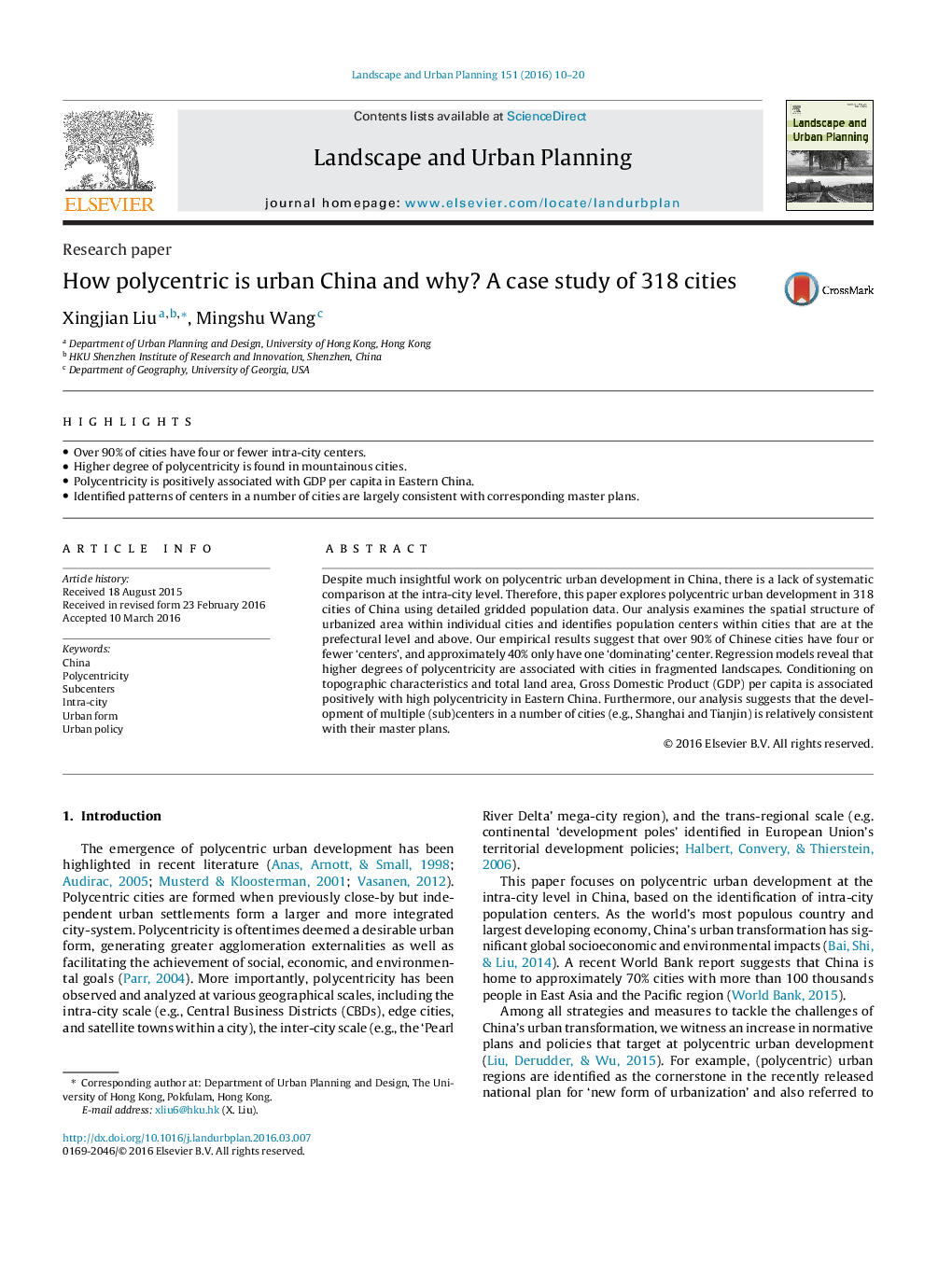| Article ID | Journal | Published Year | Pages | File Type |
|---|---|---|---|---|
| 7460619 | Landscape and Urban Planning | 2016 | 11 Pages |
Abstract
Despite much insightful work on polycentric urban development in China, there is a lack of systematic comparison at the intra-city level. Therefore, this paper explores polycentric urban development in 318 cities of China using detailed gridded population data. Our analysis examines the spatial structure of urbanized area within individual cities and identifies population centers within cities that are at the prefectural level and above. Our empirical results suggest that over 90% of Chinese cities have four or fewer 'centers', and approximately 40% only have one 'dominating' center. Regression models reveal that higher degrees of polycentricity are associated with cities in fragmented landscapes. Conditioning on topographic characteristics and total land area, Gross Domestic Product (GDP) per capita is associated positively with high polycentricity in Eastern China. Furthermore, our analysis suggests that the development of multiple (sub)centers in a number of cities (e.g., Shanghai and Tianjin) is relatively consistent with their master plans.
Related Topics
Life Sciences
Agricultural and Biological Sciences
Ecology, Evolution, Behavior and Systematics
Authors
Xingjian Liu, Mingshu Wang,
